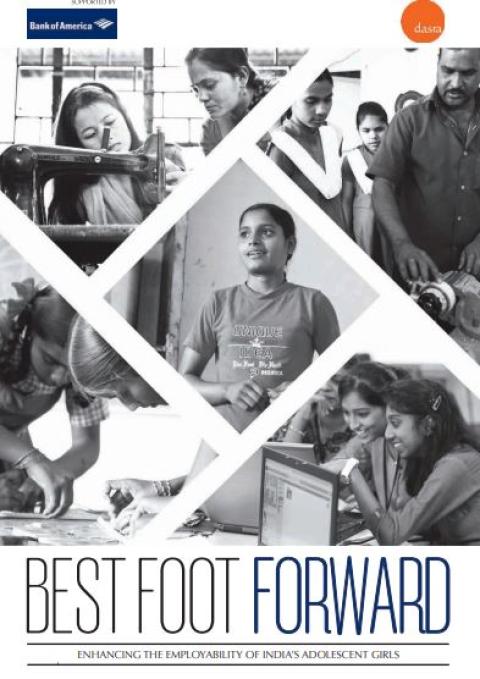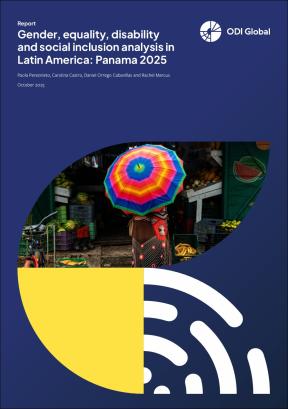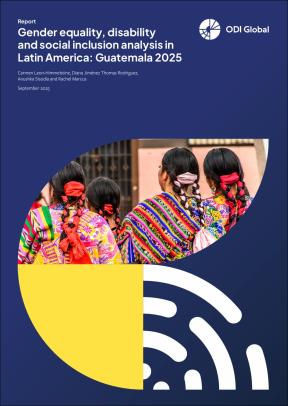- Report
- 1 March 2017
Best foot forward: Enhancing the employability of India's adolescent girls
- Author: ESubden
- Published by: Dasra

Engaging adolescent girls in the labor force, either through livelihood programs or through employment in the formal economy, is closely linked to a greater sense of empowerment, agency, increased mobility and a decline in early marriages. Employability programs work with girls to help them complete their school education and build skills that link them to formal employment and entrepreneurial opportunities. Dasra's report, Best Foot Forward, discusses the challenges of building girls' economic potential and the importance of providing them with skills that help them access income-generating opportunities in the future.
Adolescent girls in India face major barriers to achieving their economic potential. Statistically, for every 100 girls that enroll in a school in rural India, only 40 reach grade four, 18 reach grade eight and only one makes it to grade 12. On average, adolescent girls also marry younger than boys (19 vs 23). This increases girls' chances of being pushed into the informal sector during their adolescent and adult years. Investing in adolescent girls’ employability ensures high returns on investment because women reinvest a significantly larger percentage of their earnings into their families as compared to men. Bringing girls into the workforce, therefore, can benefit generations and serve as a critical pathway for poverty reduction.
The report recommends building community support for girls to work outside the home in order to increase the acceptability for girls to work, as well as expanding programs that go beyond basic literacy and practical skills and include technology skills that are essential for employment in a modern workforce. Programs in the sector must hold themselves accountable to the end goal: economic empowerment of girls. They must ensure that the curriculum equips girls with skills that local employers are looking for and that vocational training matches local market requirements.
- Tags:
- Economic empowerment
- Countries / Regions:
- India
Report
20 October 2025

Report
6 October 2025

Report
22 September 2025
